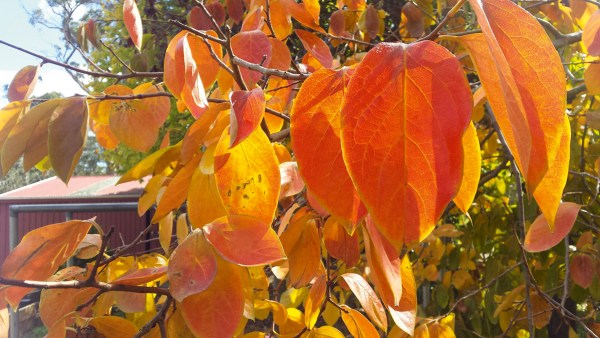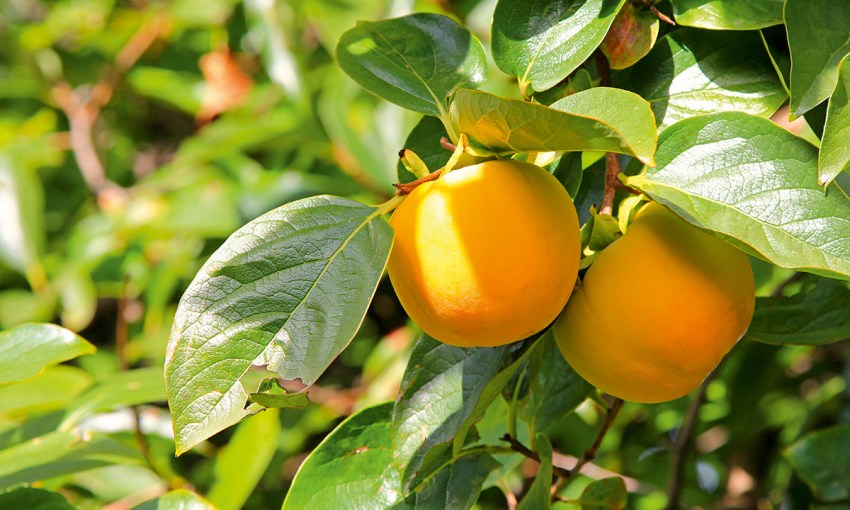Known to the ancient Greeks as fruit of the gods and grown in Asian countries for centuries, a persimmon tree is worth a spot in your garden.
In the garden: Fruit of the gods
The persimmon is an ancient, highly decorative, deciduous tree with a semi-weeping habit. In autumn it’s a stunning picture of beauty, with foliage changing colours from red to orange and yellow. It is a member of the ebony family and often referred to as the oriental kaki or Diospyros kaki.
These trees originated in Asia and have been grown there since the eighth century for their fruit, extremely hard black wood and their beauty and longevity. The tree grows to a height of about six metres and the yellow fruit, which is about the size of an apple, turns to a brilliant orange when it’s ripe, which is generally during the autumn or early winter months.
 There are two types of persimmon; one is the non-astringent type that can be eaten as soon as it is a bright orange colour and the other is the astringent variety, which has to be eaten when the flesh is soft. Both are sweet, but ripen at different times.
There are two types of persimmon; one is the non-astringent type that can be eaten as soon as it is a bright orange colour and the other is the astringent variety, which has to be eaten when the flesh is soft. Both are sweet, but ripen at different times.
Persimmons are hardy and will adapt to most growing conditions, but the non-astringent varieties are better suited to warmer climates. The astringent types tolerate most climates including frosty regions. In the garden, positions with full sun or partial shade are best for growing persimmons, but if they’re grown in full shade they tend to grow extremely tall, making it difficult to pick the fruit or to net the tree.
Plant persimmon trees during winter when they are in their deciduous state and it’s always best to buy a grafted tree to ensure a good crop sooner rather than later. They prefer a heavy soil with good drainage, but certainly not a water-logged site. If you are planting more than one tree, space them about six metres apart. The dwarf varieties can be planted three metres apart.
Don’t fertilise heavily, as this can kill the tree. Mulch around the base with a nutrient-rich mulch and water deeply and regularly, as more water produces bigger fruit. If you experience a heavy crop of fruit, thin out the flowers and small fruit at an early stage to ensure you get a good strong crop, rather than a large crop with smaller fruit.
Persimmons grow well in large tubs or containers provided you select a small self-pollinating variety. Some varieties of persimmon do require a pollinator, but Nightingale, Tanenashi, Izu, Dai Dai Maru, Flat Seedless, Fuji and Jiro don’t need a nearby pollinator.
When it’s time to harvest the persimmons, remove the fruit with a pair of secateurs to avoid damaging the fruit, rather than just pulling it off the branch. To ripen the fruit indoors, put them in a bowl with a ripe apple or banana as this will speed up the ripening process.
To keep trees at a reasonably small size, cut back up to half of the main branches each year, or you can espalier some varieties successfully if space is limited. A well-managed persimmon tree in the back yard can produce up to 10 kilograms of fruit in one season, so they are certainly well worth a spot in the home garden.
This story first appeared in the Autumn 2019 issue of SALIFE Gardens & Outdoor Living Magazine.



